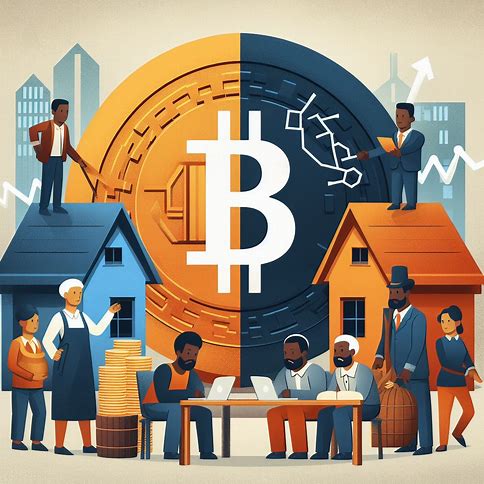The Bitcoin halving is a highly anticipated event in the cryptocurrency world and it’s actually happening this year 2024. This event occurs approximately every four years, and has significant implications for the Bitcoin network, its miners, and the broader cryptocurrency market.
What is Bitcoin Halving?
The Bitcoin halving is a predetermined event programmed into the Bitcoin protocol. It is designed to control the rate at which new Bitcoins are introduced into the circulating supply. Currently, miners are rewarded with 6.25 BTC for each block they successfully mine and add to the blockchain. However, when the halving occurs, this reward will be reduced by half, dropping to 3.125 BTC per block.
The basic purpose of the halving is to maintain the scarcity and value of Bitcoin over time. By reducing the rate at which new Bitcoins are created, the halving helps to combat inflation and ensure that the total supply of Bitcoin remains capped at 21 million.
Impact on Mining Profitability
One of the most immediate effects of the Bitcoin halving will be on the profitability of mining operations. With the block reward being cut in half, miners will see a significant reduction in their revenue. This could lead to a short-term exodus of miners who are unable to cover their operational costs, such as electricity and hardware expenses.
However, the reduced competition in the mining industry may eventually lead to a more stable and efficient network. Miners who can adapt to the new economic reality and optimize their operations will likely emerge as the dominant players after the halving.
Potential Price Implications
Historically, Bitcoin halvings have been associated with significant price rallies in the months leading up to and following the event. This is often attributed to the anticipation of reduced supply growth and the perception of increased scarcity.
However, the past performance does not guarantee future results. The cryptocurrency market has matured significantly since the previous halvings, and the impact of the upcoming halving may not be as pronounced as it was in the past. Market participants have become more sophisticated, and the halving event itself may already be largely priced in.
Safest Ways to Trade Cryptocurrency In 2024
That being said, if the halving does indeed lead to a supply shock and increased demand for Bitcoin, we could see a gradual appreciation in its price over the long term. This would be driven by the fundamental economic principles of supply and demand.
Network Security and Transaction Fees
Another potential consequence of the Bitcoin halving is its impact on network security. With reduced block rewards, miners may become more reliant on transaction fees to maintain their profitability. This could lead to an increase in transaction fees as users compete to have their transactions included in blocks.
Higher transaction fees may stop some users from making smaller transactions on the Bitcoin network, pushing them towards alternative cryptocurrencies or second-layer solutions like the Lightning Network. However, if the price of Bitcoin appreciates significantly, the higher fees may be offset by the increased value being transferred.
The upcoming Bitcoin halving is a significant event that will have far-reaching implications for the cryptocurrency ecosystem. The short-term effects on mining profitability and network security may be challenging, but the long-term impact on Bitcoin’s value remains promising.
Only time will tell how the market will respond to this event, but one thing is certain: the Bitcoin halving will continue to be a defining moment in the history of cryptocurrency.
Key Takeaways
1. The Bitcoin halving is a predetermined event that reduces the block reward for miners by half, from 6.25 BTC to 3.125 BTC per block.
2. The halving helps maintain Bitcoin’s scarcity and combats inflation by reducing the rate at which new Bitcoins enter circulation.
3. Mining profitability will be significantly impacted, potentially leading to a short-term exodus of miners unable to cover operational costs.
4. Historically, Bitcoin halvings have been associated with price rallies, but the market has matured, and the impact may not be as pronounced this time.
5. Reduced block rewards may lead to increased reliance on transaction fees, potentially driving up fees as users compete for block space.
6. Higher transaction fees could deter some users from making smaller transactions and push them towards alternative cryptocurrencies or second-layer solutions.
7. The long-term impact of the halving on Bitcoin’s value proposition remains promising, as it reinforces the cryptocurrency’s unique economic model and scarcity.
8. Market participants must remain vigilant and adapt their strategies to the new economic reality post-halving.
9. The Bitcoin halving serves as a reminder of the cryptocurrency’s potential to revolutionize the global financial system and will continue to shape its future trajectory.
Frequently Asked Questions
1. When is the next Bitcoin halving expected to occur?
The next Bitcoin halving is expected to occur in the near future, likely in 2024, as it happens approximately every four years.
2. How does the Bitcoin halving affect the total supply of Bitcoin?
The Bitcoin halving does not directly impact the total supply of Bitcoin, which is capped at 21 million. Instead, it reduces the rate at which new Bitcoins are introduced into circulation.
3. Will the halving lead to an immediate increase in Bitcoin’s price?
While previous halvings have been associated with price rallies, the immediate impact on Bitcoin’s price is uncertain. The market has matured, and the halving may already be priced in.
4. How will the halving affect miners who are unable to cover their operational costs?
Miners who are unable to cover their operational costs due to the reduced block rewards may be forced to shut down their operations, potentially leading to a short-term exodus of miners.
5. Will the halving impact the security of the Bitcoin network?
The halving may impact network security if miners become more reliant on transaction fees to maintain profitability. This could lead to increased transaction fees and potentially deter some users from making smaller transactions.
6. Are there any long-term benefits to the Bitcoin halving?
The long-term benefits of the halving include maintaining Bitcoin’s scarcity, combating inflation, and reinforcing its unique economic model. This may contribute to a gradual appreciation of Bitcoin’s value over time.
7. How can market participants prepare for the post-halving landscape?
Market participants should remain vigilant, monitor market trends, and adapt their strategies accordingly. This may involve adjusting mining operations, considering alternative cryptocurrencies, or exploring second-layer solutions like the Lightning Network.










